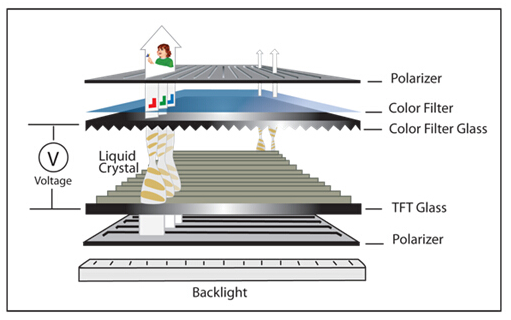Introduction of TFT LCD technology
Date:2019-11-07
We have introduced several technologies such as TN process, VA process and IPS process, and we have been sharing TFT related LCD knowledge. Today we will introduce TFT display technology in detail.
TFT (thin film transistor) is the abbreviation of thin film transistor. It is a kind of active matrix LCD that can support full-color display. Each LCD pixel on this kind of display is driven by a thin film transistor integrated behind the pixel, so TFT display is also a kind of active matrix LCD device. It is one of the best LCD color displays. TFT display has the advantages of high response, high brightness and high contrast. TFT is a perfect display product which can provide rich customer interface. It is usually used in a variety of digital devices and handheld devices. In recent years, various industrial applications have gradually appeared.

TFT display contains very small switching transistors and capacitors. These tiny switching transistors control every pixel in the display and control the rotation direction of the liquid crystal with very little energy consumption. This will allow faster control of each red, green, and blue base point, resulting in clear, fast-moving color graphics.
The transistors in the TFT are arranged in a matrix on the substrate glass, and each pixel on the display screen will remain off until the addressing command requires changing the state of the transistors. Different from the traditional passive matrix display, in order to activate a specific pixel, the corresponding row will be opened first, and then the changed instruction will be put down to the appropriate column, where only the capacitor in each specific pixel receives the open instruction until the next refresh cycle. In essence, each transistor acts as an active switch. By adding an active switch, the number of scan lines can be limited and the problem of cross effect can be eliminated.
In essence, what we call TFT-LCD is actually a kind of TN-LCD. The main problem facing TFT-LCD is that the viewing angle is small, especially in the vertical direction. If you look from the bottom to the top, you can clearly see that the picture will become very dark. Even if you move very slightly, the change of contrast and hue will be clearly observed, This may be the main disadvantage of the mainstream TN display. In recent years, some TN displays have better viewing angle than other products, but they still have a big gap with other display technologies.
